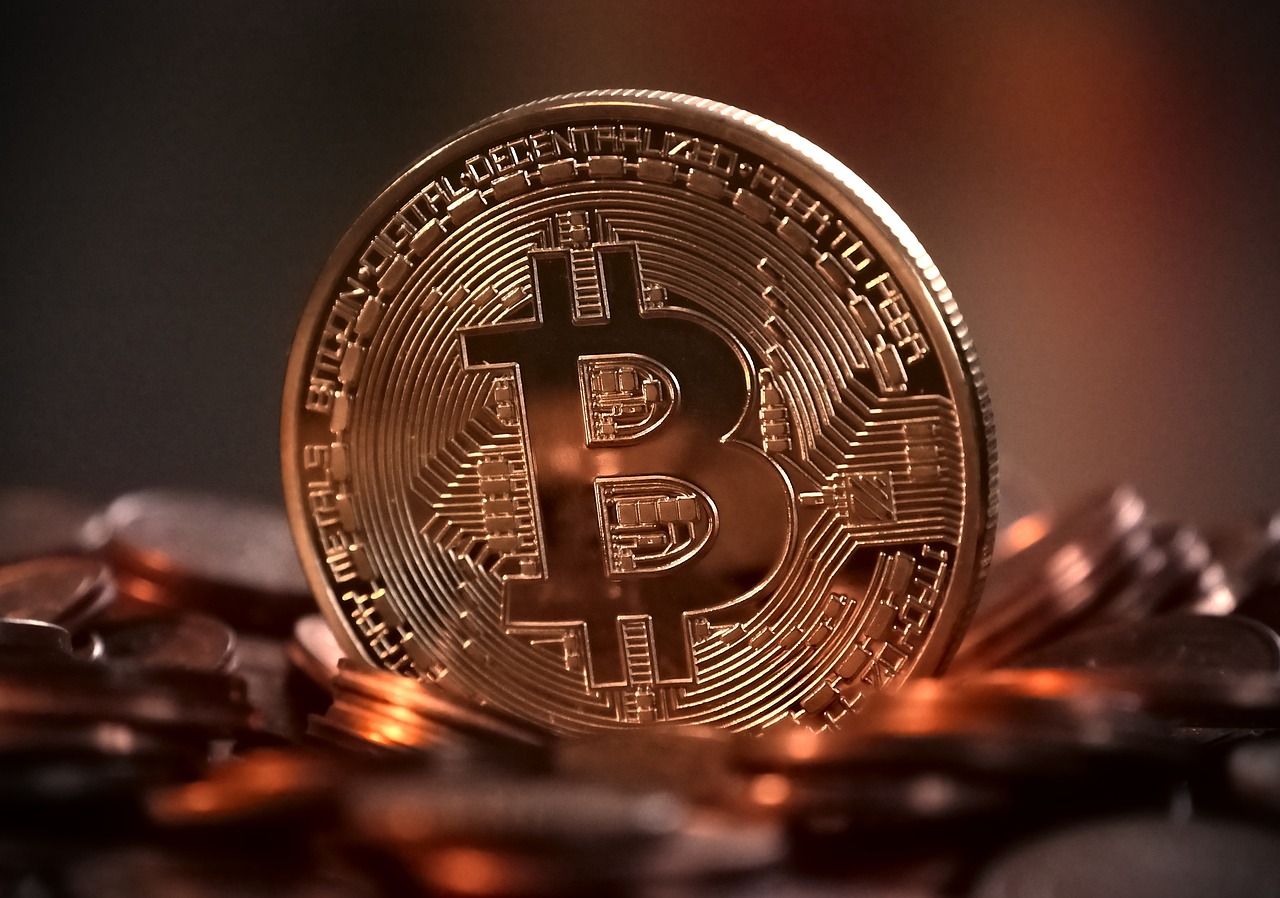Introduction
Information examination firm Cryptoquant wrote in a new report that if a Bitcoin spot trade exchange reserve (ETF) is endorsed, Bitcoin would turn into a $900 billion resource and the all-out crypto market would develop by $1 trillion.

The main rush of institutional reception in 2020-2021 came from foundations adding Bitcoin to their monetary records, while the following wave could be monetary establishments giving Bitcoin admittance to their clients through spot ETFs, CryptoQuant contended in the report.
Many major monetary organizations have applied to send off a spot Bitcoin ETF in the U.S., with endorsement expected by Walk 2024. The expected inflows from a spot ETF would be essentially bigger than the cash that entered the Grayscale Bitcoin Trust (GBTC) in the last buyer market cycle. GBTC is the world’s biggest digital money store, with $16.7 billion in resources under administration. Computerized Cash Gathering is the parent organization of Grayscale and CoinDesk.
That’s what CryptoQuant says assuming backers that have applied to list Bitcoin ETFs put 1% of their resources under administration (AUM) into these ETFs, about $155 billion could enter the Bitcoin market. This addresses roughly 33% of Bitcoin’s ongoing business sector capitalization. Assuming this situation were to happen, it would speculatively drive the cost of Bitcoin to somewhere in the range of $50,000 and $73,000.
All things considered, during past bull runs, Bitcoin’s market capitalization has expanded by 3-5 times its acknowledged capitalization. CryptoQuant said this proposes that for each $1 of new cash entering the Bitcoin market, the market capitalization could increment by $3-$5.Recently Bitcoin momentarily came to $30,000 after cointelegraph distributed a bogus report about a Spot Bitcoin ETF being supported. As per a few spectators, the frantic bullish value activity will save the bears under control for quite a while.
“No one will set out to short BTC any longer sooner rather than later,” Marcus Thielen, head of examination and system at Matrixport, said in a Message broadcast. Regardless of whether this Cointelegraph news was bogus, BTC would in any case have moved hiexchangey expecting the endorsement. Can.”
The bullish feeling is additionally apparent with GBTC limits restricted to their lowest level in almost two years. Crypto market capitalization crossed the $1 trillion imprint without precedent for January 2021. At press time, the absolute market capitalization remained at $1.13 trillion, with Bitcoin representing over half.
Bitcoin Prospects ETF: Definition, How It Works, and How to Contribute
BITCOIN OVERVIEW
| Cryptocurrency | BITCOIN |
| TICKER | BTC |
| Market Cap | $555,448,532,823 (-0.27%) |
| Rank | #1 |
| Volume (24H) | $14,948,503,870 (-42.6%) #2 |
| Volume /Market Cap(24H) | 2.70% |
| Circulating Supply | 19,517,143 BTC |
| Total Supply | 19,517,143 BTC |
| Max Supply | 19,517,143 BTC |
| Current price | $28,398.55 (-0.34%) |
What Is a Bitcoin Fates ETF?
Bitcoin fate trade exchanged reserves (ETFs) are pools of bitcoin-related resources presented on conventional trades by financiers to be exchanged as ETFs. The goal behind these ETFs is to give retail and different financial backers openness to cryptographic forms of money without expecting to possess them.
KEY Important points
Bitcoin prospects ETFs are trade exchanged reserves that mean to imitate the value developments of Bitcoin.
The ETFs use fate agreements to accomplish this objective.
Reserve supervisors buy these agreements and pack them into an asset.
These assets acquired prominence to a limited extent because the SEC impeded the formation of ETFs that straightforwardly hold Bitcoin.
Like the worth of Bitcoin itself, these ETFs are exceptionally unpredictable.
Grasping Bitcoin Fates ETFs
A Bitcoin Prospects ETF is a trade exchange store made out of resources connected with Bitcoin’s cost. They are exchanged on a customary trade rather than a digital currency trade.
Right now, the basic resources inside Bitcoin prospects ETFs are Bitcoin fate contracts. These are exchanged on the Chicago Commercial Trade. A prospects contract is a normalized agreement where two gatherings consent to trade a particular amount of resources on a particular day at a specific cost.
These ETFs are made by buying prospect contracts from the CME Gathering and packaging them into an asset. Then, the organization offers the asset to financial backers who can get it on a trade. The fate contracts in the asset are then effectively made due.
Bitcoin Fates ETF History
The primary idea for a Bitcoin prospects ETF arose soon after financial backers and representatives saw that Bitcoin costs were moving vertically and acquiring prominence among financial backers. This flagged a chance to create returns by exchanging Bitcoin.
As Bitcoin’s cost rise developed to a huge number of dollars, retail, and normal financial backers lost the chance to straightforwardly put resources into Bitcoin. Financiers, answering interest for financial backer admittance to Bitcoin, started to plan Bitcoin trade exchange reserves. Applications with the Protections and Trade Commission (SEC) for endorsement began in 2013 with the Winklevoss brothers.1
In a trade exchanged reserve that tracks stocks, the asset buys the stocks. These are the asset’s property, and the organization that gets them offers fractionalized shares on trades, which exchanges almost 24 hours of the day, seven days out of each week.
In numerous crypto fans’ psyches, a Bitcoin ETF would comprise of bitcoin bought by an organization, which would securitize them and proposition offers to financial backers. Be that as it may, the Security and Trade Commission keeps on dismissing these propositions. A new court request has constrained the SEC to reevaluate these propositions and a few specialists expect the main genuine Bitcoin ETF to be endorsed in the near future.2
The main authority Bitcoin-connected ETF was the Proshares Bitcoin System ETF (BITO), supported by the SEC in October 2021 and recorded on the New York Stock Trade.
Objectives of Bitcoin Fates ETFs
In their ongoing structure — and the structure wanted by numerous financial backers — Bitcoin prospects ETFs are intended to permit more individuals to put resources into Bitcoin without the essential costs and bothers of getting them straightforwardly. They kill the requirement for security systems and over-the-top assets while giving a natural speculation type.
Read also
Chat GPT gives 10 reasons for the price explosion of Shiba Inu token in December 2023
Best 4 Cryptocurrencies Set for Price Explode in November 2023!
Security
While you don’t have cryptographic money in your wallet, you have security keys that you want to defend assuming you own Bitcoin. Assuming you purchase your digital money through a trade, you can decide to have your keys put away on that trade assuming that it offers that assistance.
Be that as it may, wallets and trades can be hacked and keys taken — and that implies your digital money can be taken. You can store your keys disconnected utilizing a few strategies, yet these techniques are not generally 100 percent secure or ensured. An ETF doesn’t expect you to possess any digital currency, store keys securely, or move the keys this way and that between various sorts of capacity — you own portions of the asset, which claims no cryptographic money by the same token.
You can store your keys in a”hot wallet” (associated with the web) or “cold stockpiling” (a disconnected technique). Each has its advantages.
Excessive costs
One of the main deterrents for normal financial backers is cost. Bitcoin (BTC) set a record high of almost $69,000 per BTC soon after the Proshares Bitcoin Prospects ETF was recorded on the NYSE. Throughout the following couple of years, its value dropped to under $17,000, then, at that point, rose to somewhere in the range of $20,000 and $30,000. Since late 2022, the cost has gradually risen, hopping above $30,000 for a period and sitting at about $27,500 at the hour of writing.3
The significant expense of a solitary Bitcoin implies that even at the present lower costs, retail financial backers might not have the resources to buy a solitary Bitcoin. An ETF permits you to acquire openness to BTC reasonably affordable for you, risk resilience, and contributing objectives.
ETFs are Better Perceived
Maybe above all, ETFs are greatly improved and figured out across the speculation world than digital currencies. Thus, assuming you’re just keen on becoming associated with computerized money contributing, an ETF allows you to zero in on exchanging a resource you as of now see as opposed to finding out about blockchain, mining, decentralized trades, dispersed records, key capacity, and digital currency.
The most effective method to Put resources into Bitcoin Fates ETFs
Assuming you’re hoping to put resources into Bitcoin prospects ETFs, you can buy them through your merchant or counselor if they offer them. There are a few Bitcoin prospects ETFs that exchange on trades, for example, the New York Stock Trade ARCA and Nasdaq:
Proshares Bitcoin Technique ETF (BITO)4
Valkyrie Bitcoin Technique ETF (BTF)5
VanEck Bitcoin Technique ETF (XBTF)6
Worldwide X Blockchain and Bitcoin Technique ETF (BITS)7
There are additionally Bitcoin prospects ETFs that let financial backers short the cryptographic money, for example, the ProShares Short Bitcoin ETF (BITI).8
On April 6, 2022, the SEC endorsed the Teucrium Bitcoin Prospects Asset (BCFU), so the rundown of supported Bitcoin fates ETFs proceeds to grow.9
It’s critical to take note that these ETFs do not altogether contain Bitcoin prospects. Generally, they put resources into conventional protections, holding Bitcoin fate contracts when it meets the asset’s methodology. For instance, the Proshares Bitcoin System Asset is intended to stand firm on Bitcoin prospects contracts just when footings are productive. If not, it can hold the protection of Bitcoin-related organizations and currency market instruments. It can likewise utilize reverse buy agreements.4
What is the Contrast Between a Bitcoin Fates ETF and a Bitcoin ETF?
A Bitcoin Prospects ETF plans to follow the value changes of Bitcoin by trading subsidiaries contracts. A Bitcoin ETF, conversely, straightforwardly holds Bitcoin in its portfolio.
Is putting resources into Bitcoin Prospects ETFs unsafe?
Indeed, Bitcoin and other cryptographic forms of money are exceptionally theoretical resources and will generally see critical cost instability. That can make putting resources into these ETFs dangerous and their costs inclined to huge swings.
Are There Downsides to Putting Resources into Bitcoin Fates ETFs?
Bitcoin Fates ETFs can make it simpler for ordinary financial backers to get openness to the cryptographic money, yet like all ETFs, they charge a cost proportion. You might have the option to contribute with lower expenses by purchasing Bitcoin straightforwardly.
Is Bitcoin Managed?
The guideline of Bitcoin is a cloudy subject. The degree of guideline differs from one country to another even starting with one state then onto the next. The IRS will in general treat Bitcoin and other crypto as property while the Ware Prospects Exchanging Commission (CFTC) regards it as a product. Bitcoin Prospects ETFs are managed by the CFTC.
The primary concern
Bitcoin prospects ETFs are reserves that group Bitcoin fate contracts. They give financial backers without the means or want to put straightforwardly in digital currency a method for acquiring openness to these unpredictable, and in some cases worthwhile, resources. You can buy them on true trades.
Disclaimer
Disclaimer: Caution! Careful! Careful! Any financial and crypto market information given on Cryptomenya is an article, written for informational purposes only and is not investment advice. The readers are further advised that Crypto products and NFTs are unregulated and can be highly risky. There are many ups and downs in the crypto coin market, so there is a constant fear of losing money, so whenever you invest, do your research or invest under the supervision of a well-informed person. For any reason, Cryptomenya.com will not be held liable for any financial loss incurred by investors.
